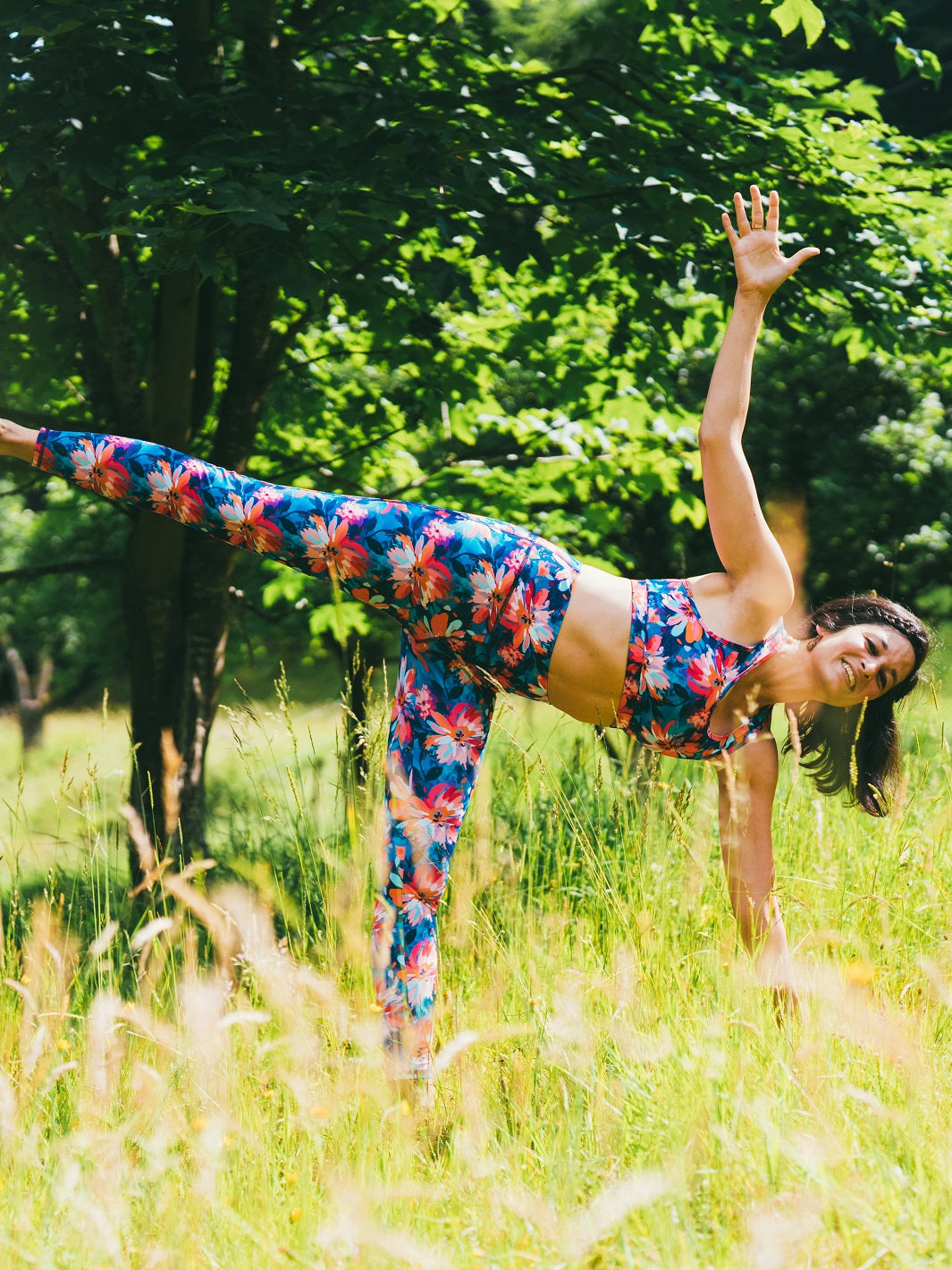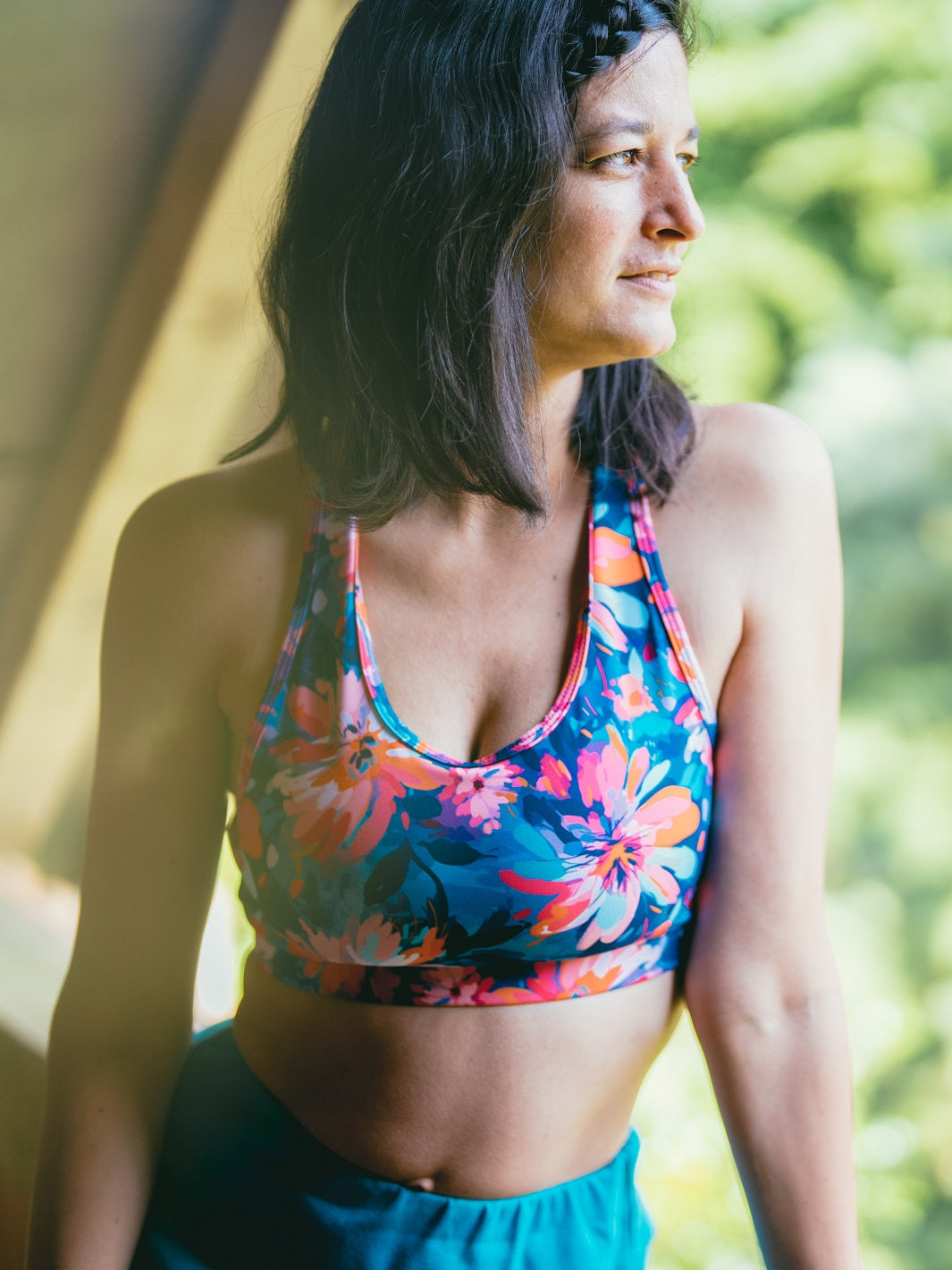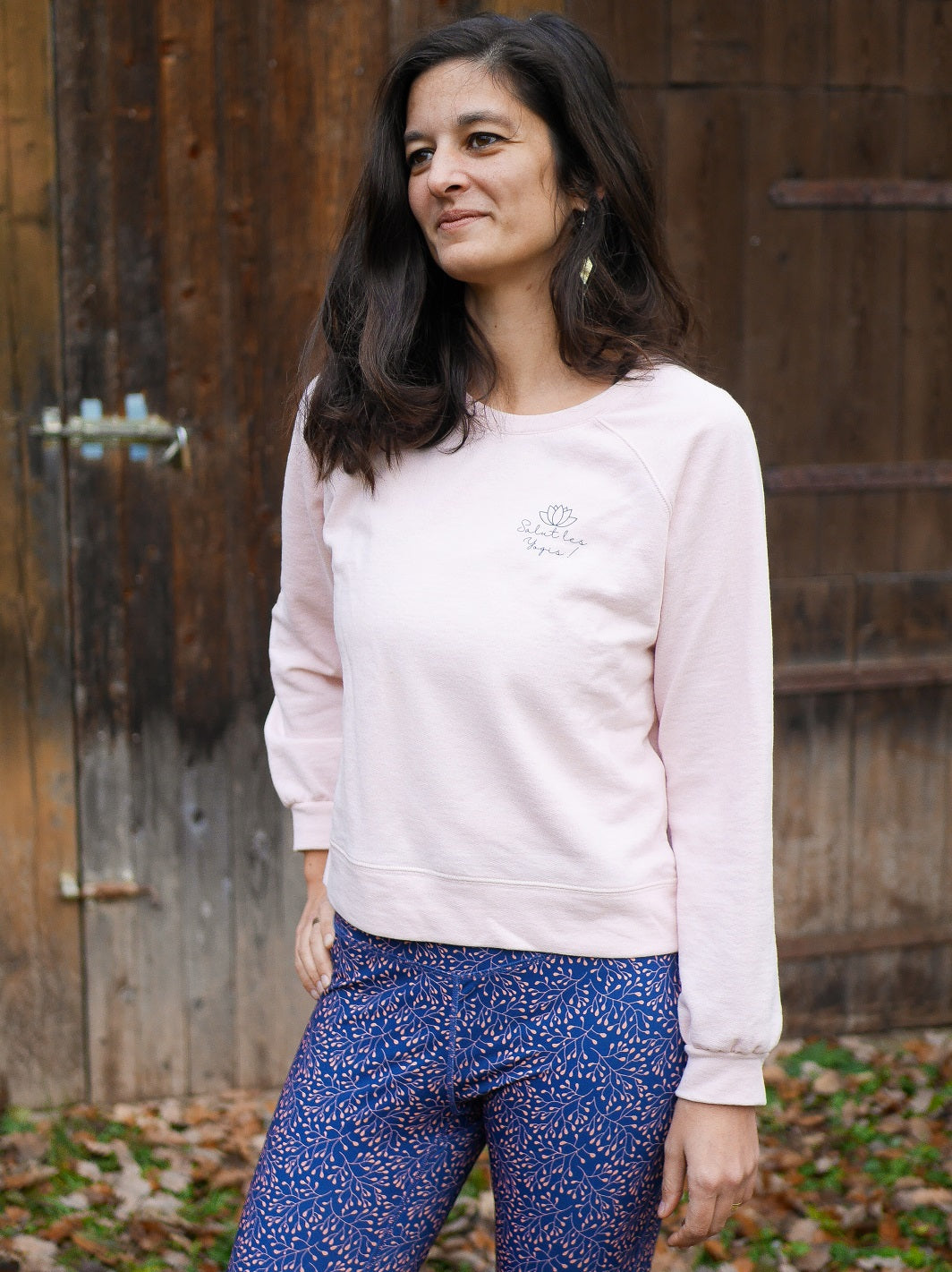Diving into the practice of yoga goes far beyond physical postures.
It is a path to the deep connection between body, mind and soul.
To nourish this inner dimension, several complementary approaches can be explored, such as practicing outdoors, in direct contact with nature and its energies, or even integrating positive affirmations to strengthen intention and mental presence.
In this article, we will explore another beautiful synergy: that between yoga and essential oils, a combination that enriches the holistic experience of yoga, bringing balance and well-being to each session.

1. The Symbiosis of Yoga and Essential Oils
1.1 The Essence of Practice
Yoga is not just a stretching session; it is an exploration of the self, a meditation in movement.
Essential oils, extracted from plants with therapeutic properties, add a sensory dimension to this experience, intensifying the benefits of yoga.
1.2 Essential Oils as Emotional Support
Each essential oil carries specific aromatic properties that influence emotions and the mind.
Lavender oil, for example, can promote relaxation, while citrus oil can bring vitality and mental clarity.
By incorporating them into yoga, we can amplify the emotional and spiritual effects of the practice.

2. The Art of Aromatic Breathing
Yoga places a strong emphasis on conscious breathing, and introducing essential oils can intensify this experience.
The practice of deep breathing, or pranayama, combined with aromas such as peppermint, can boost vitality and clarify the mind.
It is an invitation to inhale purity and exhale stress.
2.1 Meditation with Mantras and Perfumes
Incorporating essential oils during meditation with the use of mantras creates a multi-sensory experience.
Imagine the spiritual depth that emerges when the captivating scent of incense blends with the sonic vibrations of a repeated mantra.
It is a total immersion in spirituality.
2.2 Rebalancing the Chakras with Essential Oils
Chakras, the body's energy centers according to yogic tradition, can benefit from the targeted use of essential oils. For example, applying ylang-ylang oil to the heart chakra can facilitate emotional openness, while peppermint oil to the throat chakra can encourage communication.

3. Integrating Essential Oils into Yoga Practice
3.1 Create an Opening Ritual
Before beginning your yoga session, create an opening ritual by diffusing essential oils.
This signals to your mind that it's time to relax and reconnect.
3.2 Essential Oils for Asanas
Apply essential oils to specific points during your asanas.
For example, massaging the temples with peppermint oil can improve concentration during balancing poses.
3.3 Essential Oils for Meditation
During meditation sessions, essential oils can create a space conducive to concentration and contemplation.
Incense or sandalwood is often used to uplift the spirit and promote spiritual connection.
3.4 Be Creative with Diffusers
Experiment with diffusers during your practice.
Whether it's an ultrasonic essential oil diffuser or a simple aromatic candle, create an olfactory environment that inspires you.

4. Choose your oil according to the type of yoga you practice
The choice of essential oil depends partly on the effect you are looking for and your personal preferences.
Here are some suggestions for essential oils to accompany different types of yoga:
4.1 Hatha Yoga
Lavender essential oil: It promotes relaxation, calms the mind, and reduces stress, which can be beneficial for hatha yoga sessions focused on relaxation and meditation.
4.2 Vinyasa Yoga
Peppermint essential oil: It stimulates and refreshes, which can be helpful for vinyasa yoga sessions that involve fluid, dynamic movements.
4.3 Yoga Nidra
Roman Chamomile Essential Oil: It promotes deep relaxation and restful sleep, which can be perfect for yoga nidra practices that aim to induce a state of deep meditation and relaxation.
4.4 Ashtanga Yoga
Lemongrass essential oil: It is stimulating and invigorating, which can be beneficial for Ashtanga yoga sessions that require focus and energy.
4.5 Kundalini Yoga
Patchouli Essential Oil: It promotes grounding, balance, and connection to the earth, which can be helpful for kundalini yoga practices that aim to awaken life energy.
4.6 Bikram Yoga (or hot yoga)
Peppermint or lemon essential oil: These oils can help cool and invigorate the body during Bikram yoga sessions, which are typically practiced in heated rooms.
Be sure to dilute essential oils in a carrier oil like coconut or sweet almond oil before applying them to your skin, and avoid using them during practice if you are sensitive to odors or if they distract you.
Additionally, always check the specific precautions for each essential oil and consult a healthcare professional before using them, especially if you are pregnant, breastfeeding, or have pre-existing health conditions.

5. DIY: Create Your Own Essential Oil Blends
5.1 Morning Revitalizing Blend
• 3 drops of lemon
• 2 drops of rosemary
• 1 drop of ginger
5.2 Soothing Massage Oil for Relaxation
• 30 ml of coconut oil
• 5 drops of lavender
• 3 drops of chamomile
5.3 Relaxing Blend for Meditation
• 3 drops of incense
• 2 drops of lavender
• 1 drop of sandalwood
5.4 Yoga Mat Refreshing Spray
• 30 ml of distilled water
• 5 drops of lemon
• 5 drops of peppermint

6. Safety and Practical Considerations
6.1 Choose Quality Essential Oils
Choose pure, therapeutic-grade essential oils to ensure a beneficial experience.
Avoid synthetic blends that may contain harmful chemicals.
6.2 Consult a Healthcare Professional
If you are pregnant, have specific health conditions, or are taking medication, consult a healthcare professional before incorporating essential oils into your practice.
Holistic Conclusion
The combination of yoga and essential oils goes beyond simply adding aromas to physical practice.
It is a sensory exploration, an invitation to dive deep within oneself using the gifts of nature.
Whether it's to promote focus, boost energy, open the heart, or balance the chakras, essential oils are powerful companions on the yogic journey.
So, the next time you unroll your yoga mat, let yourself be enveloped by the calming and uplifting scents that amplify every pose, every breath, and guide you to a state of total harmony.
It's much more than a yoga session; it's a sensory celebration of life, a subtle fusion of the ancient and the contemporary in the endless quest for balance.






Leave a comment